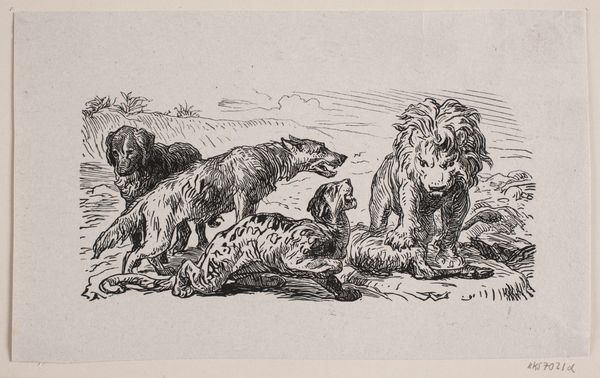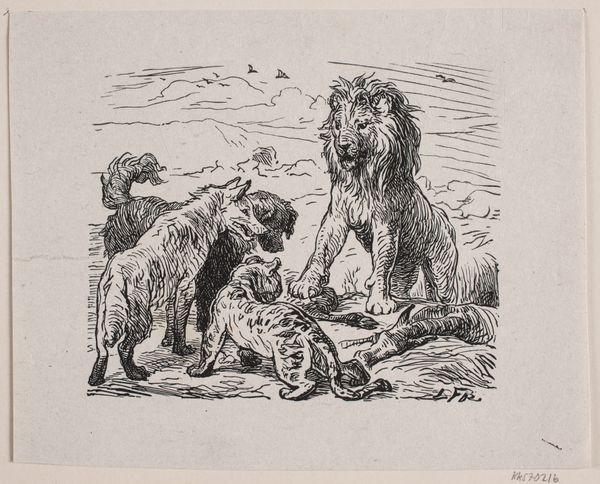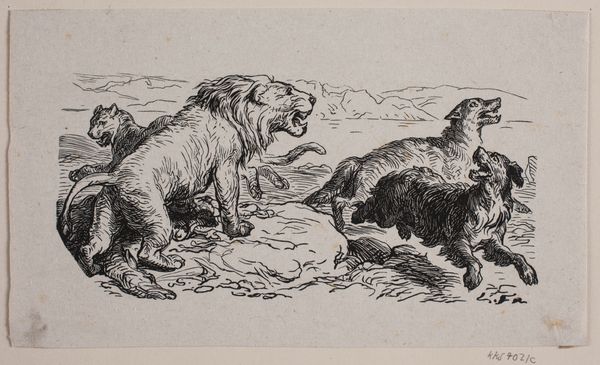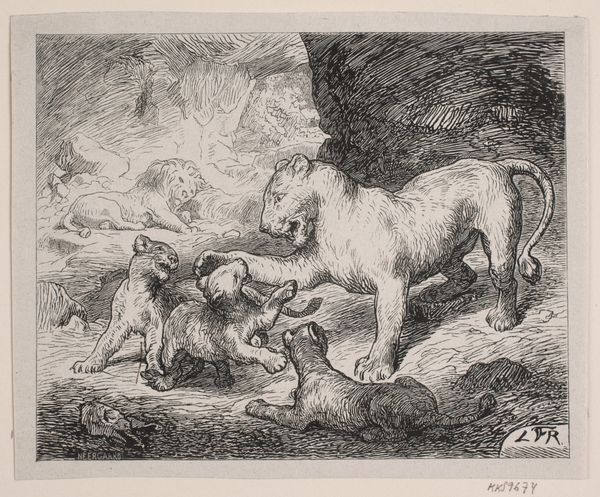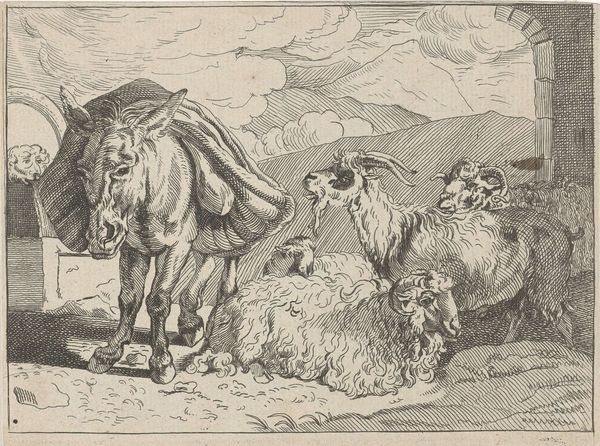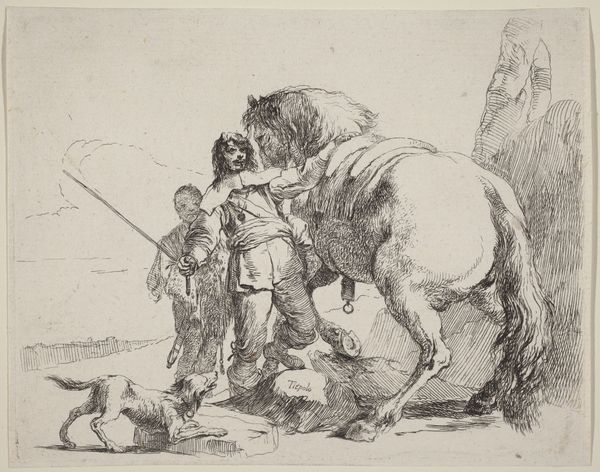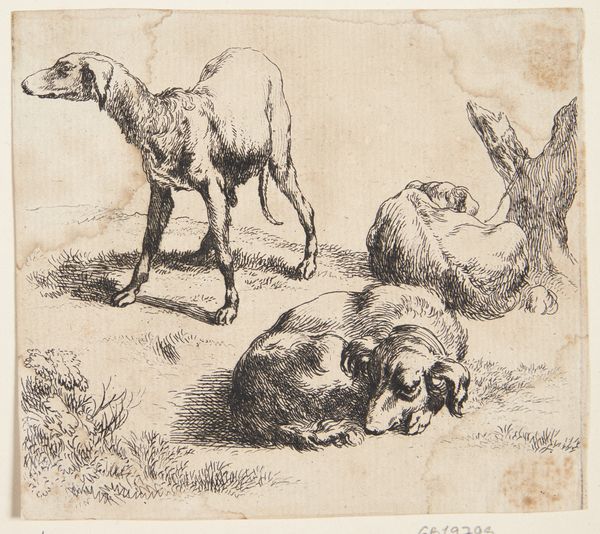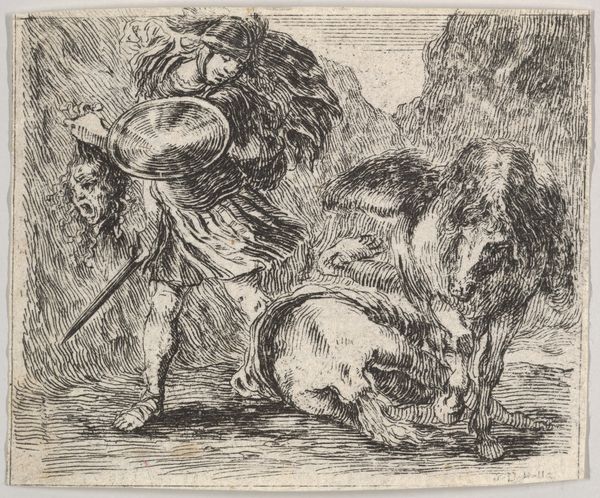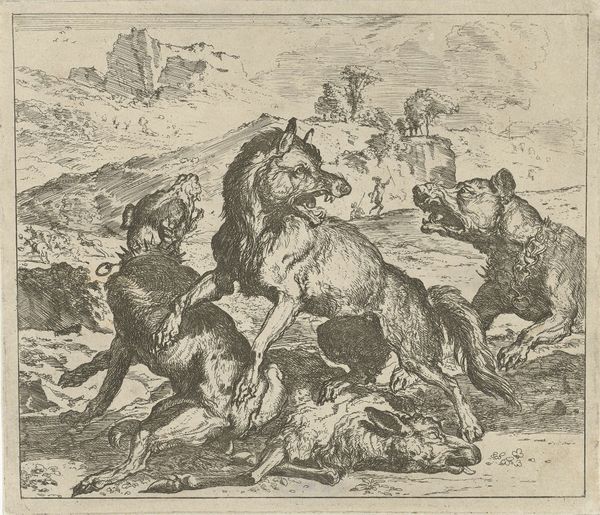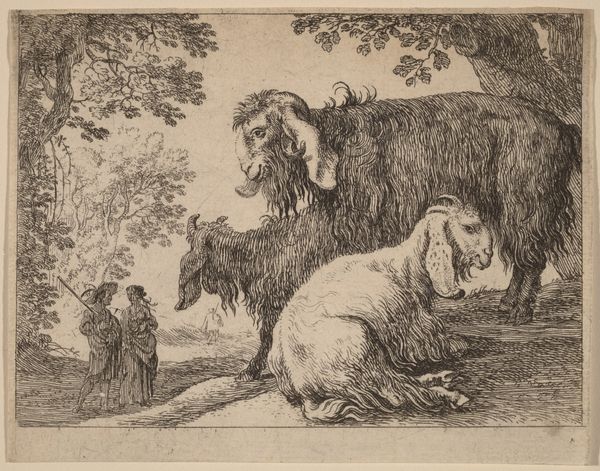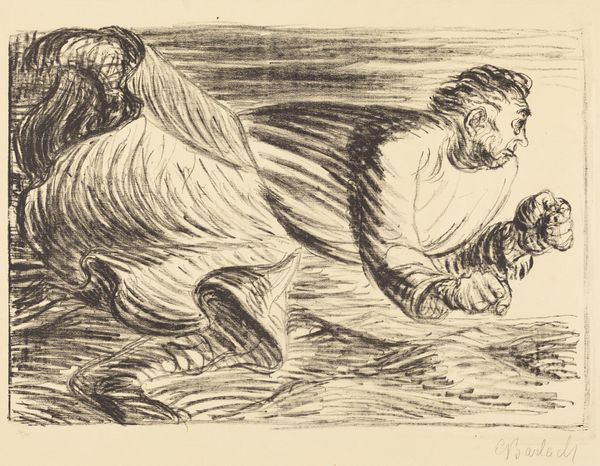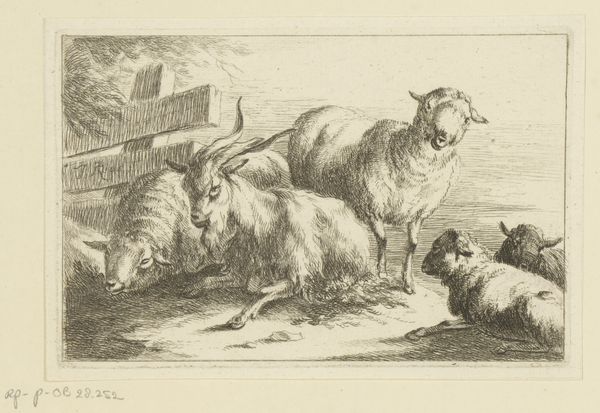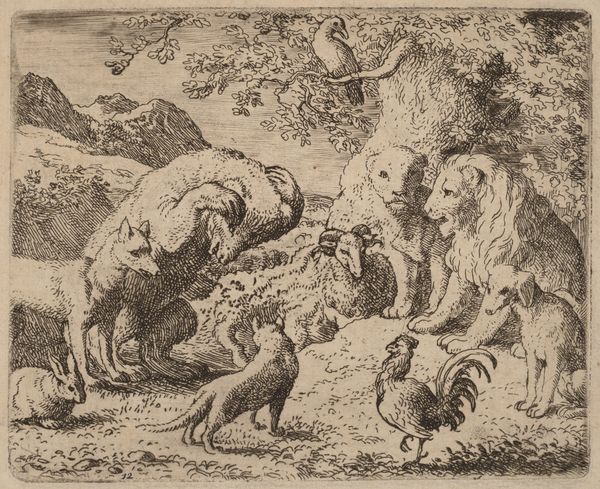
print, woodcut, engraving
#
narrative-art
# print
#
woodcut
#
genre-painting
#
engraving
Dimensions: 128 mm (height) x 175 mm (width) (bladmaal)
Curator: At first glance, this image feels intensely hierarchical. The dramatic lighting certainly accentuates the lion as the undisputed master. Editor: Precisely. What we have here is an 1872 print by Franz Wilhelm Obermann, titled "Illustration til 'Fablen om løvens jagt'" which translates to "Illustration for 'The Fable of the Lion's Hunt'". Obermann was a Danish artist who frequently employed printmaking techniques like woodcut and engraving, evident here. Curator: The composition is fascinating. Note the elevated position of the lion on what appears to be a rocky outcrop. It dominates the other animals, literally looking down upon them. Editor: He effectively visualizes social dynamics of the time, wouldn't you agree? Consider the context: European society in the late 19th century. Animal fables were commonly used to comment on societal power structures, providing a subtle, but pointed, critique. Curator: Good point! Beyond its thematic concerns, observe the contrast in textures—the lion’s mane versus the sleek coats of the other creatures, realized through intricate line work. Editor: That linear precision supports Obermann's narrative clarity. Each stroke serves to delineate not just form but also the implied tensions within the depicted hierarchy. The setting also tells a tale: note the mountainous backdrop representing nature, the very theater of primal struggles. Curator: I think there's more than just visual depiction occurring, I’d venture to say Obermann uses tonal variation almost as a mode of visual argumentation. The darker areas underscore the dramatic tension, leading us through the scene and reinforcing our perception of power. Editor: A keen insight! His decision to work with print underscores a broader movement aimed to democratize access to art at that moment in time. Obermann utilizes a traditional art form and yet makes pointed commentary on political undertones and overtones. Curator: The lion as king is very archetypal, yes, and even looking closer you still get lost in the details like each strand of fur, but after learning the social, cultural, and institutional historical relevance this piece holds, I can never see it the same. Editor: Likewise, by investigating structure, tones and how he utilized his medium we are better able to discuss its lasting legacy and message in art history and perhaps for years to come.
Comments
No comments
Be the first to comment and join the conversation on the ultimate creative platform.
